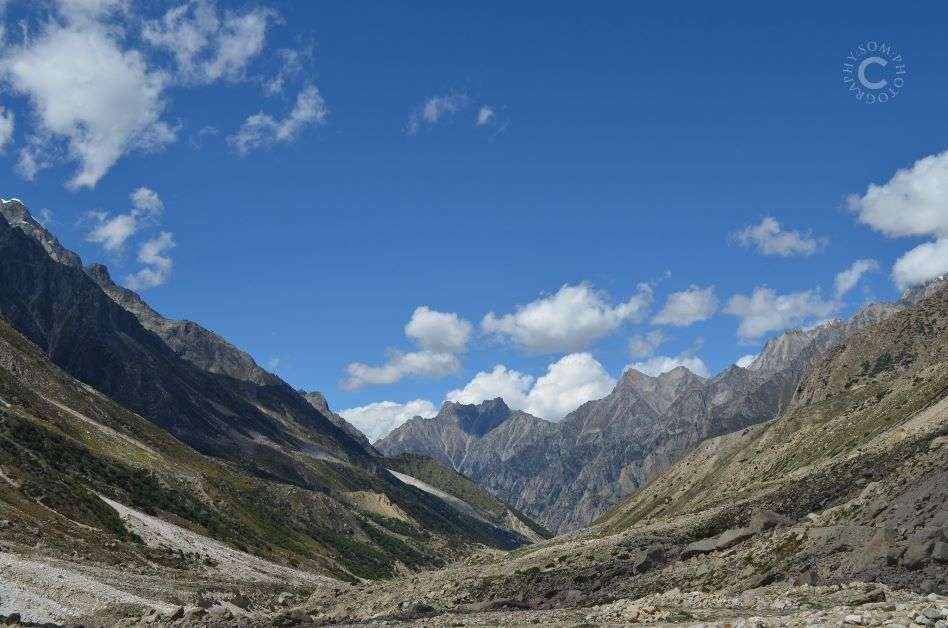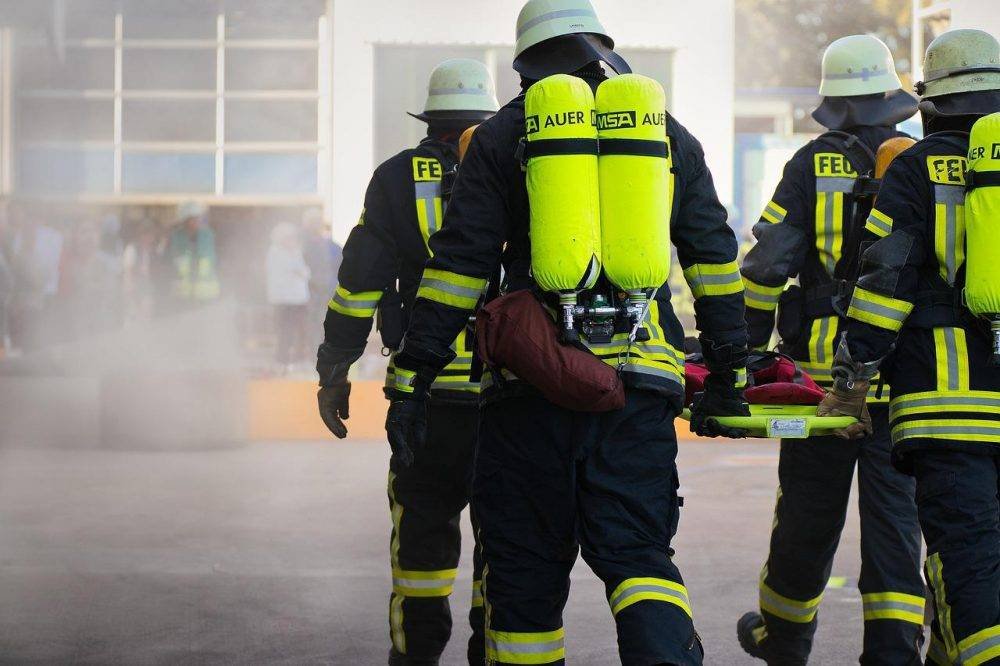Introduction
Chasing glaciers is an exhilarating adventure, and the Gaumukh Trek offers a unique and unforgettable experience. Nestled in the heart of the Himalayas, this trek takes you through breathtaking landscapes, tests your limits, and provides a spiritual journey.
Glaciers, these majestic rivers of ice, have fascinated adventurers and nature enthusiasts for centuries. The Gaumukh Trek, named after the “Cow’s Mouth,” where the Ganges River originates from the Gangotri Glacier, offers a unique chance to experience these icy marvels’ untainted beauty and strength.
The Gaumukh Trek Route

Starting Point: Gangotri
The journey commences in the charming town of Gangotri, a significant pilgrimage site. From here, trekkers set foot on a path that gradually reveals the stunning landscapes of the Garhwal Himalayas. The trail winds through dense pine forests, allowing glimpses of the towering peaks.
Wonderful Sceneries Along the Way
As trekkers ascend, the landscapes undergo a mesmerizing transformation. Lush greenery gives way to alpine meadows adorned with vibrant flowers. The air becomes crisper, and the distant sound of rushing water heralds the proximity of the mighty Bhagirathi River.
The journey isn’t just a physical challenge; it’s a visual feast. Blue skies, immaculate glaciers, and snow-capped peaks combine to create an unmatchedly beautiful canvas.
Challenges and Preparations
Undoubtedly, the Gaumukh Trek poses its challenges. The altitude, reaching over 13,000 feet, demands acclimatization. Trekkers need to be prepared physically and mentally for the rigors of the journey. This includes proper gear, a fitness regimen, and mental resilience to navigate the unpredictable mountain terrain.
For a memorable Gaumukh Trek experience, consider exploring the Himalayas with The Searching Souls, known for their expertise in organizing adventurous and well-guided trekking expeditions.
Flora and Fauna
Breathtaking Biodiversity
One of the trek’s highlights is the rich biodiversity encountered along the way. The trail is adorned with a tapestry of flora, ranging from rhododendrons and orchids to rare medicinal plants. Each step reveals a new species, adding a layer of natural beauty to the adventure.
Rare Species Encountered During the Trek
Watch carefully; you might be fortunate enough to spot the elusive Himalayan tahr or snow leopard. The Gaumukh Trek is not just a physical journey; it’s a chance to connect with the untamed wildlife that calls the Himalayas home.
Spiritual Significance
Gaumukh and Its Religious Importance
Gaumukh, the snout of the Gangotri Glacier, holds immense religious significance for Hindus. The terminus is believed to resemble a cow’s mouth, symbolizing the birthplace of the sacred Ganges River. Pilgrims visit Gaumukh to pay homage to the river considered the embodiment of purity.
Temples and Traditions Along the Trek
The trek is not just a physical challenge; it’s a spiritual odyssey. Along the trail, trekkers encounter small temples, each with its folklore and rituals. Engaging with these local traditions adds a unique spiritual dimension to the trek.
Unique Experiences

Camping Amidst Nature’s Majesty
Camping along the trail is an experience in itself. As the sun sets behind snow-capped peaks, the sky transforms into a canvas of colors. The night sky, unpolluted by city lights, reveals a breathtaking display of stars. The rhythmic sound of the Ganges adds a soothing soundtrack to the adventure.
Participating in Local Culture
Interactions with the locals in remote villages offer a glimpse into a way of life intricately connected with the mountains. The warmth and hospitality of the mountain communities add a cultural richness to the adventure, creating lasting memories.
Safety Measures
Importance of a Guide
Navigating the challenging terrain requires more than just a map. An experienced guide ensures your safety and enriches the trek with insights into the local ecology and culture. Their presence is invaluable in overcoming unexpected challenges.
Weather and Altitude Considerations
The Himalayas are notorious for unpredictable weather. Trekkers must be prepared for sudden temperature changes and be aware of altitude-related risks. Acclimatization stops, proper gear, and a flexible itinerary are essential for a safe and enjoyable trek.
Perplexity of Glacial Formations

Understanding Glaciers
To fully appreciate the trek, it’s essential to understand the perplexity of glaciers. These colossal ice formations have shaped the landscape over centuries, carving valleys and leaving behind a trail of geological wonders. Trekkers have the opportunity to witness nature’s sculpting process firsthand.
Geological Marvels Encountered
The trek takes you through various glacial formations, from crevasses to seracs. Each step reveals the intricate dance of ice and rock, showcasing the Earth’s geological history. It’s a journey through time, witnessing the forces shaping the Himalayas.
Burstiness of Adventure
Adrenaline-Pumping Moments
The Gaumukh Trek is not for the faint-hearted. Crossing swaying suspension bridges, navigating narrow ridges, and traversing icy slopes provide moments of pure adrenaline. These challenges, though daunting, contribute to the burstiness that defines the adventure.
Overcoming Personal Limits
Trekking is not just a physical endeavor; it’s a mental and emotional challenge. The journey forces you to confront personal limits and push beyond what you thought possible. It’s a transformative experience, showcasing the strength within.
Gauging Personal Preparedness
Physical Fitness
Physical fitness is the foundation of a successful trek. A pre-trek fitness regimen that includes cardio, strength training, and endurance exercises is crucial. Building stamina prepares the body for the demanding trail.
Mental Resilience
Trekking at high altitudes is as much a mental challenge as a physical one. The thin air, isolation, and unpredictable conditions can test mental resilience. Developing a positive mindset and mental toughness are essential for overcoming obstacles.
More Information: Himalayan Havens: Nag Tibba or Pangarchulla – Which Trek Suits You Best?
Preserving the Environment
Leave No Trace Principle
As adventurers, it’s our responsibility to tread lightly. The “Leave No Trace” principle is a mantra for every trekker. Minimize your environmental impact by packing out all waste, respecting wildlife, and sticking to established trails.
Sustainable Hiking Methods
Support local initiatives that promote sustainable trekking. Choose eco-friendly gear, opt for responsible tour operators, and contribute to local conservation efforts. By adopting sustainable practices, trekkers play a crucial role in preserving the pristine beauty of the Himalayas.
Embark on the Gaumukh Trek with The Searching Souls, a reputable trekking company that ensures a blend of stunning landscapes, professional guides, and a seamless trekking experience.
Recommendations for Future Trekkers
Essential Gear
Proper gear is the key to a comfortable and safe trek. Sturdy, waterproof boots, layered clothing, a reliable backpack, and essential accessories like headlamps and trekking poles are must-haves. Invest in quality gear for a seamless trekking experience.
Dos and Don’ts
Respect for the environment and local culture is paramount. Follow trekking etiquette, adhere to guidelines set by authorities, and be mindful of your impact. Avoid littering, refrain from disturbing wildlife, and embrace a responsible approach to trekking.
Capturing Memories
Photography Tips
The Gaumukh Trek offers unparalleled opportunities for photography. Capture the play of light on glaciers, the vibrant hues of alpine meadows, and the panoramic views from high-altitude vantage points. A good camera, extra batteries, and a keen eye for composition will ensure you document the journey in all its glory.
Documenting the Journey
Maintaining a trek diary adds a personal touch to the adventure. Chronicle the challenges faced, the breathtaking moments, and the camaraderie built along the way. Your written reflections will serve as a cherished memento of the transformative journey.
Connecting with Fellow Trekkers
Building Camaraderie
Trekking is not just about conquering peaks; it’s about the shared experiences and bonds formed along the way. Gather around the campfire, swap stories, and connect with fellow trekkers. The friendships forged amidst the Himalayan wilderness often last a lifetime.
Shared Experiences
Exchange stories with fellow trekkers. Learn from their experiences, share insights, and appreciate the diverse backgrounds that converge on the trail. The collective tales become a part of the broader narrative of the Gaumukh Trek.
The Culmination: Reaching Gaumukh
Achieving the Goal
The pinnacle of the trek is, undoubtedly, reaching Gaumukh. Standing before this glacial marvel, witnessing the birthplace of the Ganges, is a moment of profound achievement. The sheer magnitude of the glacier and the surrounding peaks is a humbling reward for the challenges endured.
Reflecting on the Journey
As you stand at Gaumukh, take a moment to reflect on the journey. The physical and mental hurdles, the breathtaking landscapes, and the spiritual undertones all culminate in this singular moment. The Gaumukh Trek is not just an adventure; it’s a transformative experience that leaves an indelible mark on the soul.
Conclusion
In conclusion, the Gaumukh Trek is a multifaceted adventure that seamlessly blends physical challenge, spiritual exploration, and environmental consciousness. Chasing glaciers in the Himalayas is not just a pursuit of frozen wonders; it’s a journey that reshapes perspectives and fosters a deep connection with nature.
FAQs
Are novices able to complete the Gaumukh Trek?
While challenging, beginners can undertake this trek with proper preparation and guidance. Assessing one’s fitness level and seeking advice from experienced trekkers or guides is essential.
What is the best time to embark on the Gaumukh Trek?
The summer months of May to June and the post-monsoon months of September to October are the best times to undertake the Gaumukh Trek. The weather is relatively stable during these periods, making the trek more accessible.
Does the trek offer access to medical facilities?
Some of the trail’s villages offer basic medical services, but hikers are encouraged to bring their first aid supplies. In case of severe medical issues, evacuation may be required, so having travel insurance with evacuation coverage is recommended.
How can I contribute to the conservation of the trekking environment?
Trekkers can contribute to conservation by following the “Leave No Trace” principle, avoiding single-use plastics, and supporting local initiatives. Participating in organized clean-up drives and promoting responsible trekking practices among fellow trekkers also helps preserve the fragile Himalayan ecosystem.
What level of fitness is required for the Gaumukh Trek?
A good level of physical fitness is essential for the Gaumukh Trek. If possible, Trekkers should engage in regular cardio exercises, strength training, and altitude simulation. It’s advisable to consult with a fitness professional or a healthcare provider before embarking on the trek.


